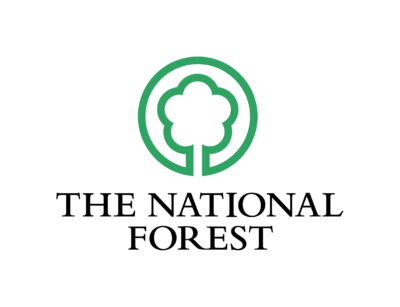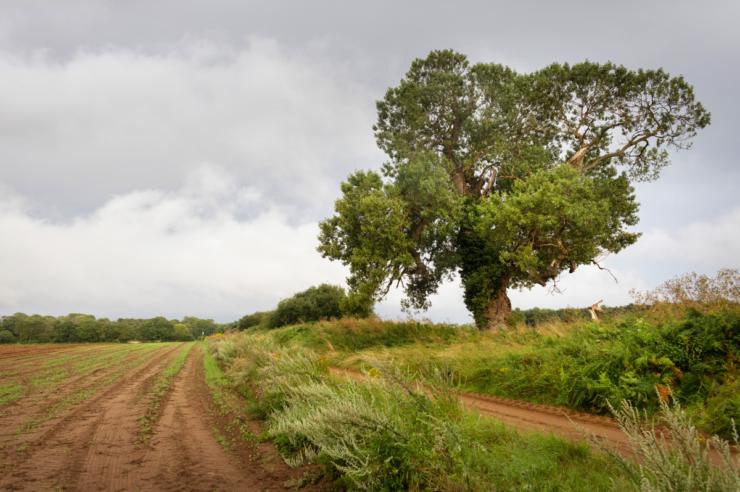Tree-planting rates in the UK are lagging against government targets, but ambitions remain high. One way to boost figures is to team up with farmers to diversify their land, but what’s the smartest way to do this? We speak to landowners and experts to find out
Forest creation is a slow business. “You plant the trees,” says Leicestershire farmer James Ludlum, “but it’s five years before you’ve realised that you’ve planted them, they’re such little things in the ground. Then their roots are down and they’ve started to bolt and all of a sudden you have a woodland.”
In 2004, Ludlum began the process of creating a woodland at Cattows Farm, which lies 16 miles north-west of Leicester. Taking 100 acres of arable land out of production, he planted it with native broadleaf tree species. The intention was to further diversify a family business that had gone from purely dairy farming 70 years ago to include pick-your-own fruit orchards, a farm shop and restaurant.
Nearly 20 years later and the woodland is a pretty spot for a walk, regularly hosts festivals and sporting events, and is even home to a year-round forest school. Wildlife, says Ludlum, is thriving: “Only the other day I was walking through the forest and a muntjac deer came through one of the clearings. That would have been unheard of 10 years ago.”
The UK government has set a goal to plant 30,000 hectares of woodland annually by the end of the current parliamentary term. This ambition has been welcomed by many as a significant step to achieve the country’s carbon and biodiversity targets, yet groups as varied as the UK’s forestry trade body and a cross-bench committee of MPs have argued that at current planting rates, it’s unlikely that this target will be met.
With agricultural land making up 71% of the total area of the UK, engaging with farmers like Ludlum is one way to turn things around in time to meet those targets. The challenge is that, while national woodland creation grants are available to support farmers and other landowners, these groups are often unaware of them. Or, if they are aware, are too overstretched to pursue funding opportunities, as grant applications can be complicated and time-consuming. Others still are critical, and hesitant to take agricultural land out of use.
Ludlum was only able to create the new woodland at Cattows Farm thanks to financial support and advice from the National Forest. The charity, which is leading on the creation of a 200 sq mile swathe of rural and urban forest in the Midlands, has worked with more than 350 landowners to support nearly 500 grant-aided forest creation schemes since it was established in 1995.

Every landowner will have particular boxes they need to tick with regard to how they manage their land. Image: Nishant Aneja
“I don’t think we had an awareness of why you would plant trees on good arable land,” says Ludlum. “It seemed to make no business or farming sense. But then the National Forest was able to quite clearly demonstrate the benefits of doing it, and we’ve had ongoing support from day one, right up to now.”
In Ludlum’s case, the National Forest’s support has enabled them to build a tourism business at Cattows Farm, with the new woodland attracting customers to the farm shop and restaurant. He also rents out the forest to other businesses, and sells the thinnings of the woodland for biomass and firewood.
It’s been a similar story at Deer Park Farm in Staffordshire, where Lesley Prince has created a woodland walk of 15,500 trees that is drawing people to a new farm shop and cafe, all through backing from the National Forest. The whole process, says Prince, “was impeccably well managed and looked after and delivered. We’ve had untold amounts of support.”

Farmers can expand their business in many ways, including opening it to tourism and hospitality. Image: Studio 74
Some farmers considering planting woodland will have other boxes they need to tick, explains Rob Cleaver, forest creation manager at the National Forest: “We don’t tell the landowner what to do with their land. We ask them about their ambitions and then we see how we can help them.”
That might mean planting trees whose branches or roots will minimise erosion by wind or water, thereby benefiting the soil and improving crop yields. Or planting to provide shade for grazing animals as the climate continues to heat, putting pressure on both their health and, in the case of dairy cows, their milk yield.
Such bespoke solutions are being explored beyond the boundaries of the National Forest, too, through national schemes via the Forestry Commission, and others. The Tree Council, a charity that works to protect and create treescapes across the country, is partnering with Shropshire council and Cornwall county council on pilots designed to find innovative ways to increase tree planting on farmland.
“We’ve had a really good response from farmers wanting to get creative about growing trees on their land,” says Jackie Shallcross, who manages the pilots for The Tree Council. As with the National Forest’s work, many of these strategies have benefits for farmers, but the Tree Council is also keen to identify “things that farmers can do to increase canopy on their land that don’t necessarily impact on the farm business”, Shallcross explains. An awkward corner of a field that is inaccessible to farm machinery could be a good candidate for a copse, for example.
It’s still early days for The Tree Council’s pilot schemes, which will run until spring 2025, but Shallcross is hopeful about their potential for increasing planting in the future. “If we can be as enabling as possible to landowners then these measures are a really great way to increase trees in our wider landscape,” she says.
Cleaver, who can draw on the National Forest’s nearly 30 years of successful engagement with landowners, agrees: “When you look at what’s been achieved you have to be optimistic for the future.”
Main image: SolStock






